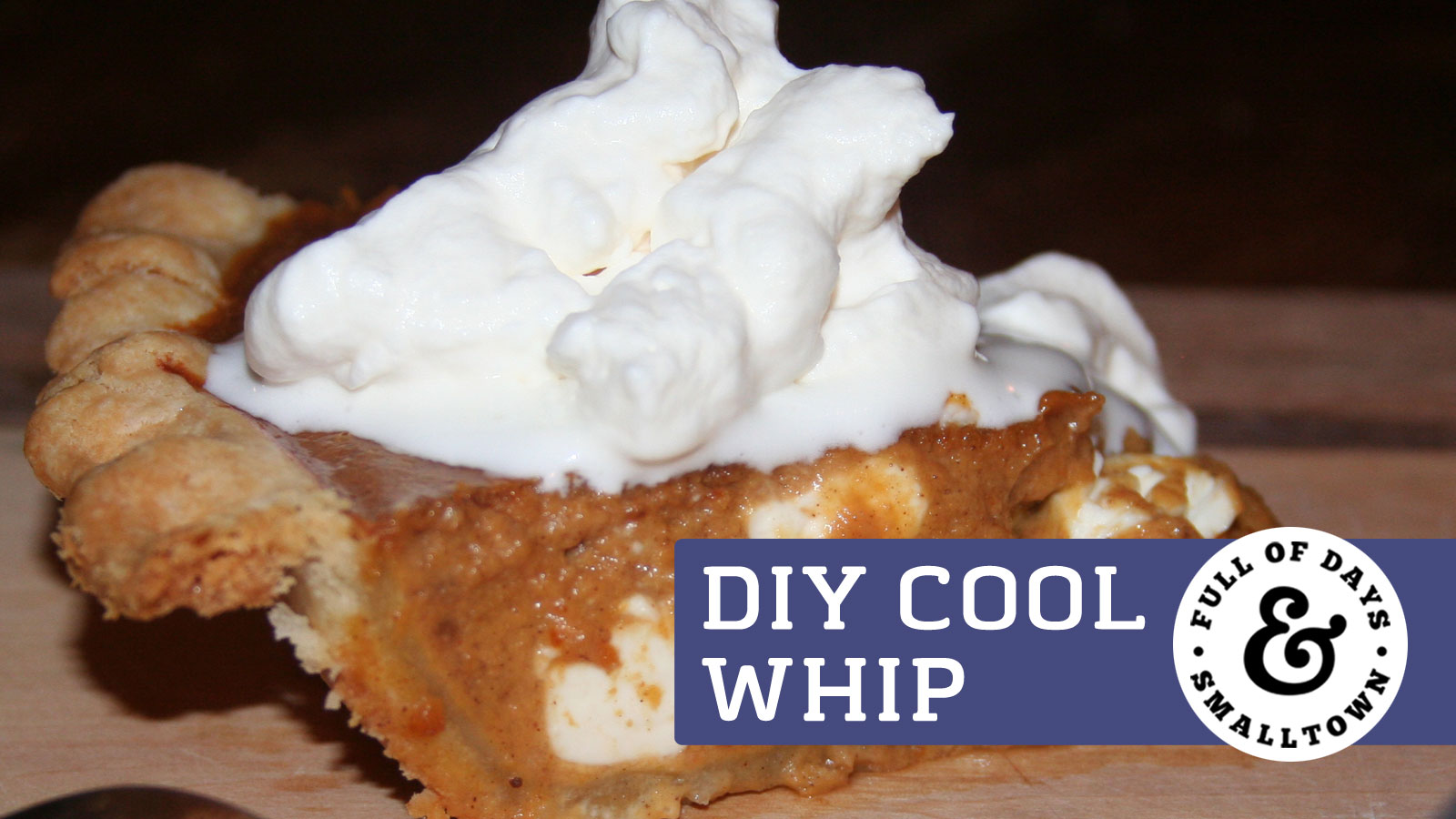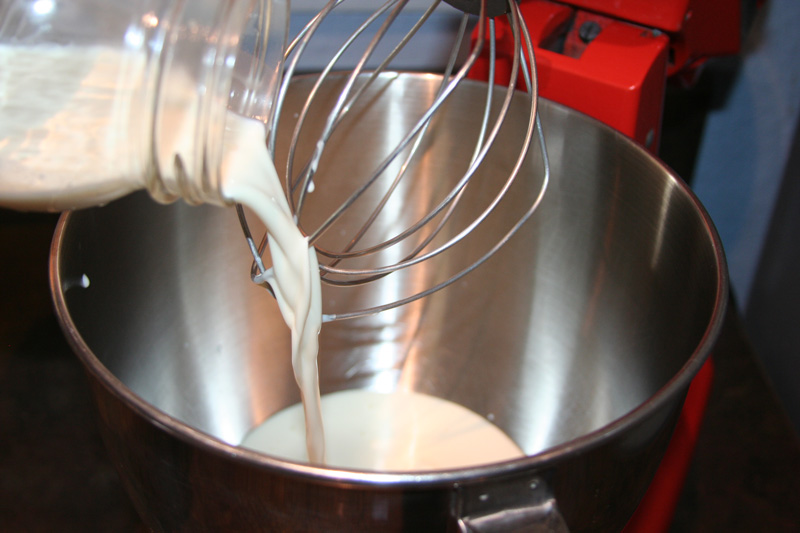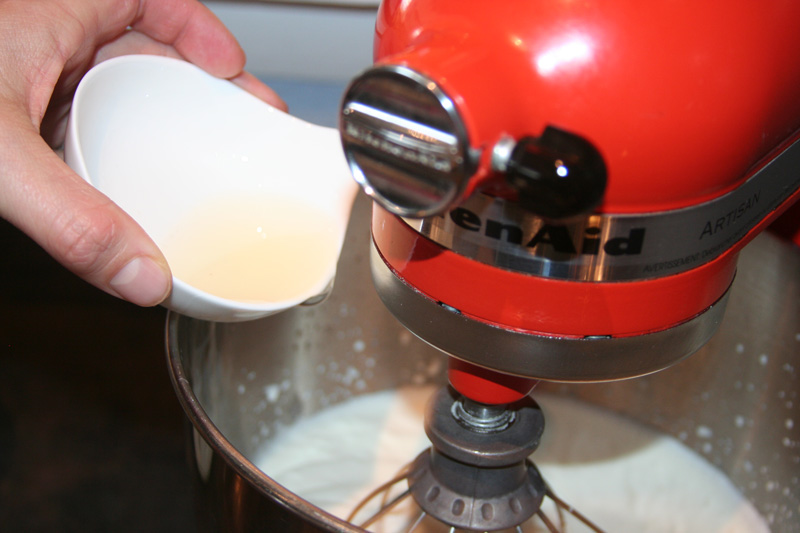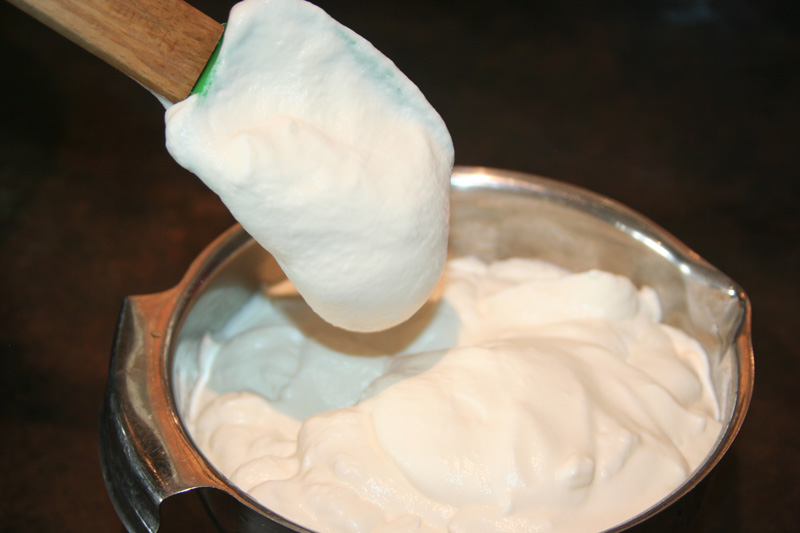
ool whip…straight out of the freezer, scoopable, thick and creamy deliciousness. Without which my homemade Frog-Eye Salad just wouldn’t be as tasty. But what do I do when these are the ingredients staring me in the face?
- Hydrogenated Oils
- High-fructose Corn Syrup
- Skim Milk
- Light Cream
- Sodium Caseinate
- Natural Flavors
- Artificial Flavors
- Xanthan Gum
- Guar Gum
- Polysorbate 60
- Sorbitan Monostearate
- Beta Carotene
First of all, what’s the deal with these ingredients? I can hardly pronounce them, let alone understand what they’ll to to my health. So after a bit of research, here’s the breakdown:
- Hydrogenated oils have been linked to heart disease.
- HFCS (high-fructose corn syrup) is a large contributor to obesity and diabetes, and there are now studies saying there may be mercury (in trace amounts) in hfcs. Mercury is linked to cancer, reproductive disorders and many degenerative diseases. (Source)
- Skim milk & light cream…well, ya’ll know my stance on low-fat dairy products. If not, read this post on why we consume raw milk!
- Sodium Caseinate is a dairy derivative and has been linked to autism and allergies.
- Natural & artificial flavors really aren’t “ingredients” at all. Truth is, we don’t know for certain what these “natural” and “artificial” flavors are which can include gluten and MSG and be from either a vegetable or animal source. If you have sensitivities to gluten or MSG you’ll want to steer clear of this ingredient.
- Xanthan & Guar Gums seem innocent on first glance and are used as thickeners or stabilizers. But to those with sensitive stomachs, or gastrointestinal issues, they can cause some serious GI upset. In fact, these are actually used as a laxative in medicine! Umm, no thanks!
- Polysorbate 60 is chemically derived and linked to organ toxicity, diarrhea and tumors in lab mice…moving right along. (Source, source)
- Sorbitan Monostearate is chemically derived and actually not food at all, but wax. That’s right, wax. Perhaps this explains that mysterious coating left on the roof of your mouth after eating Cool Whip?
- Beta Carotene is actually the only decent “ingredient” in this product. Although not in its naturally occurring form (which is always ideal) beta carotene is either converted into vitamin A (the retinol form) or it acts as an antioxidant to help protect the cells from the damaging effects of free radicals. But trust me, this one ingredient is not enough cause to justify this “food” choice. (Source)
Now that we’ve established the reasons to never consume Cool Whip again…what do we when we need this light yet sturdy fluff for a recipe? What do I use for my traditional Thanksgiving side-dish of Frog Eye Salad? Do I turn a blind eye and use it anyway, chalking it up as part of our 20% in our 80/20 rule?
Not so fast! Last year I was pleasantly surprised to have come across a DIY Cool Whip from Ashton over at Something Swanky. With a slight modification in the sugar, this is a recipe that I’ll definitely keep around! Thank you Ashton for this perfectly acceptable substitute!
Ingredients
1/4 cup filtered water
1 tsp. unflavored gelatin
1/2 tsp. cream of tartar
1 3/4 cups whipping cream (or raw heavy cream)
2-3 Tbs. maple syrup
1 tsp. vanilla
Buy from Amazon
Gelatin
Cream of Tartar
Maple Syrup
Organic Vanilla
Buy from Azure
Gelatin
Cream of Tartar
Whipping Cream
Maple Syrup
Organic Vanilla
To Make: Be sure to read through all the steps, including Ashton’s tips, before starting this recipe! This isn’t an exact replica of Cool Whip, it’s more like a firm whipped cream that can be used in most recipes that call for Cool Whip. We happen to prefer the taste of this real whipped topping over the chemical fluff listed above.
Step 1: Add water to a small saucepan. Sprinkle gelatin over the top of the water and let sit for 2-3 minutes.
Step 2: Turn heat up to medium-low and stir until gelatin dissolves. Remove from heat and let cool completely.
Step 3: Add 1 Tbs of the whipping cream to a small bowl and sprinkle the cream of tartar over the top. Stir to combine, being sure there are no lumps.
Step 4: Pour cream of tartar mixture into the bowl of your stand mixer and add the maple syrup and remaining cream.
Step 5: Using the whisk attachment, mix on medium speed for about 1-2 minutes, or until cream begins to thicken.
Step 6: With mixer still going, slowly pour in the gelatin mixture and vanilla.
Step 7: Continue whisking until mixture is smooth and fluffy (be careful not to over-mix, it will stiffen slightly once cooled).
Ashton’s Tips:
- Don’t skip dissolving the cream of tartar…it’s the best way I’ve found to keep it from clumping (yuck).
- I’ve tried every which way to skip the stove top part of this process. But unless you want clumps of gelatin in your whipped cream, you have to dissolve it in the hot water over the stove, and then let it cool down before adding it to the whipping cream.
- Be sure not to over-mix during the whisking process. You shouldn’t try for stiff peaks– you’ll just end up with a curdled mess (albeit a yummy one). Once the cream is thick enough to spread, stop whisking. It will still look soft, but that’s okay.
- Store covered in the refrigerator, just like you would Cool Whip.






